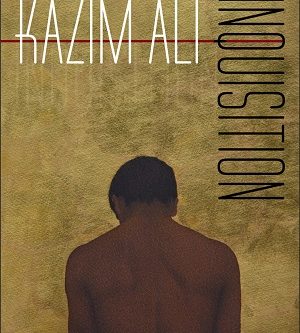 The Strangest by Michael J. Seidlinger
The Strangest by Michael J. Seidlinger
The Strangest is a clever 21st century reimagining of the existentialist classic, The Stranger by Albert Camus. Michael J. Seidlinger (most recently the author of The Face of Any Other) has taken the difficult task of entering into a dialogue with a text that is regarded as a masterpiece of the 20th century, and surprisingly, has breathed new life into it. The novel follows the same narrative arc that the classic follows and the themes of existentialism and “outsiderness” roam aplenty here as well. Where The Strangest differs from The Stranger, however, is where it actually shines. Neither homage, pastiche, or simple parody, the novel paints a remarkable depiction of the way we communicate and function within society today and our culture’s over reliance on social media to fit in.
The novel follows the anti-social and despairingly ineffectual Zachary Weinham who works at a retail store and carries on a vague, mostly ambiguous, relationship with a girl named Veronica. Instead of playing an active role in society, Zachary spends most of his time obsessing over a social media presence he has created for himself by the name of “Meurks” (an obvious nod to Meursault from The Stranger). Through Meurks he records nearly every social situation he encounters in his day via a social media post. Zachary is more interested in the comments and likes he receives as Meurks than the actual interactions he has with characters like Veronica, his work colleagues, or the shady Rios. The notion of people connecting more with their digital selves than their actual selves is where Seidlinger really captures the current social media milieu brilliantly. By creating a digital “alter ego” it also adds a feeling of dynamism to a character that for all intents and purposes is lethargic and apathetic. As the novel carries along (albeit slowly and in a daze the first 50 pages or so) a series of events and odd friendships lead Zachary to commit murder and must suffer the consequences. Sound familiar? Sure.
Given that the novel follows the same emotional beats and a similar narrative arc as the work it is in conversation with, it is told with enough stylistic flair and filled with a contemporary idiosyncratic anxiety that keeps it feeling fresh. Seidlinger employs the same short, staccato like sentences that are prevalent in The Stranger but formally Seidlinger gives us brief little vignettes, which are set into the chapters of the novel. Sometimes the vignettes are 100 words long. Sometimes they are 500. The vignettes are emblematic of a kind of piecing together of “truth” that Zachary goes through in the novel. Sometimes painfully insightful – sometimes rambling and inconsequential – the vignettes are a nice stylistic touch that let us into the fractured and socially disconnected mind of our modern day Meursault.
Much like Seidlinger’s millennial contemporary Tao Lin, he shows us that despite all the opportunities social media gives us to connect, sometimes we are left feeling alienated, hollow and utterly disconnected from society. The Strangest successfully taps into the disorienting “otherness” that was so compelling in The Stranger and creates a harrowing vision of 21st century life. If Seidlinger is onto anything at all here, we’re all fucked.
The Strangest is available now from OR Books.



